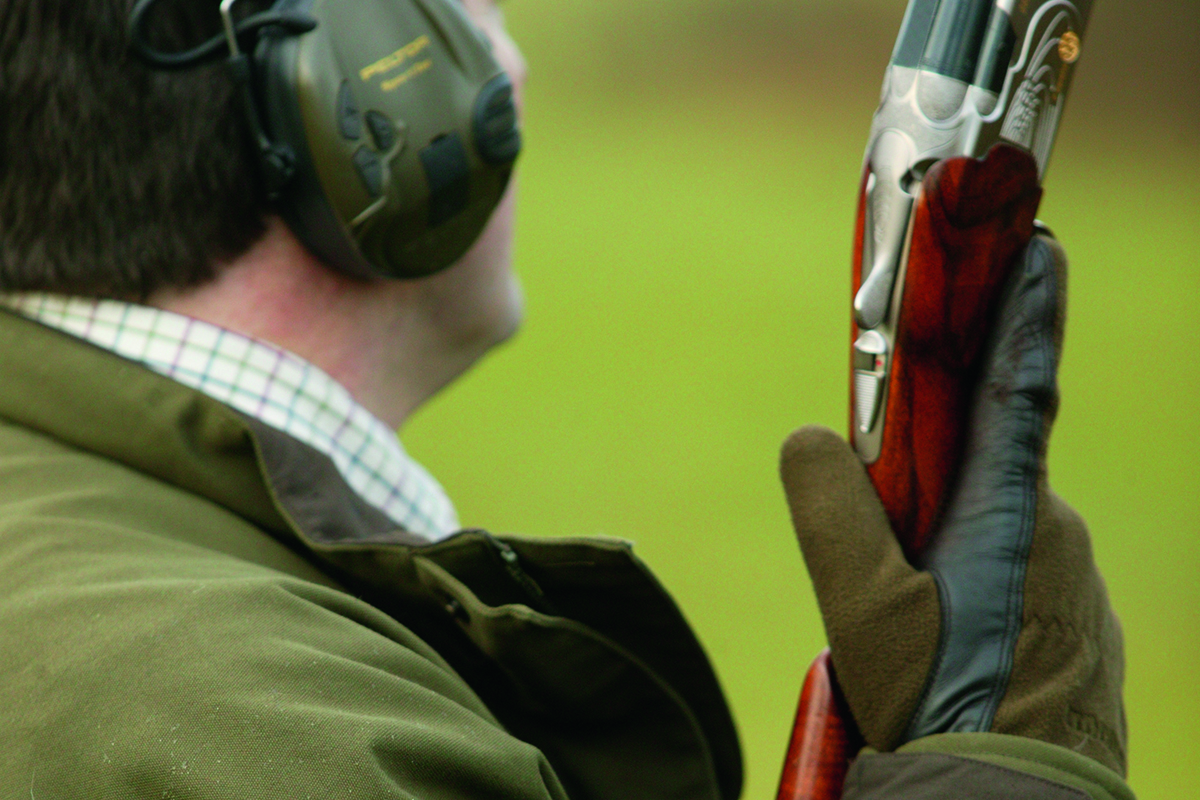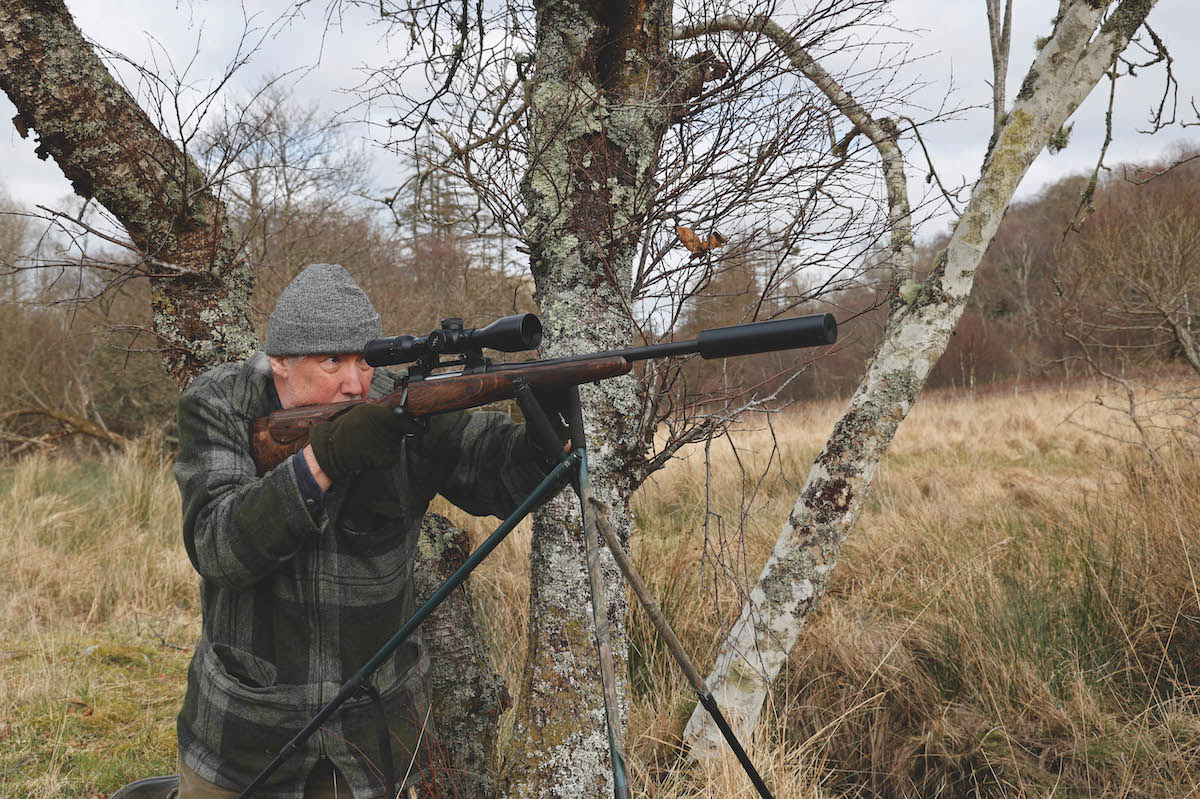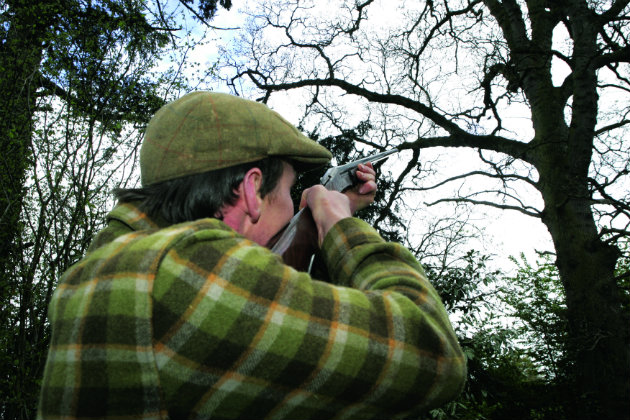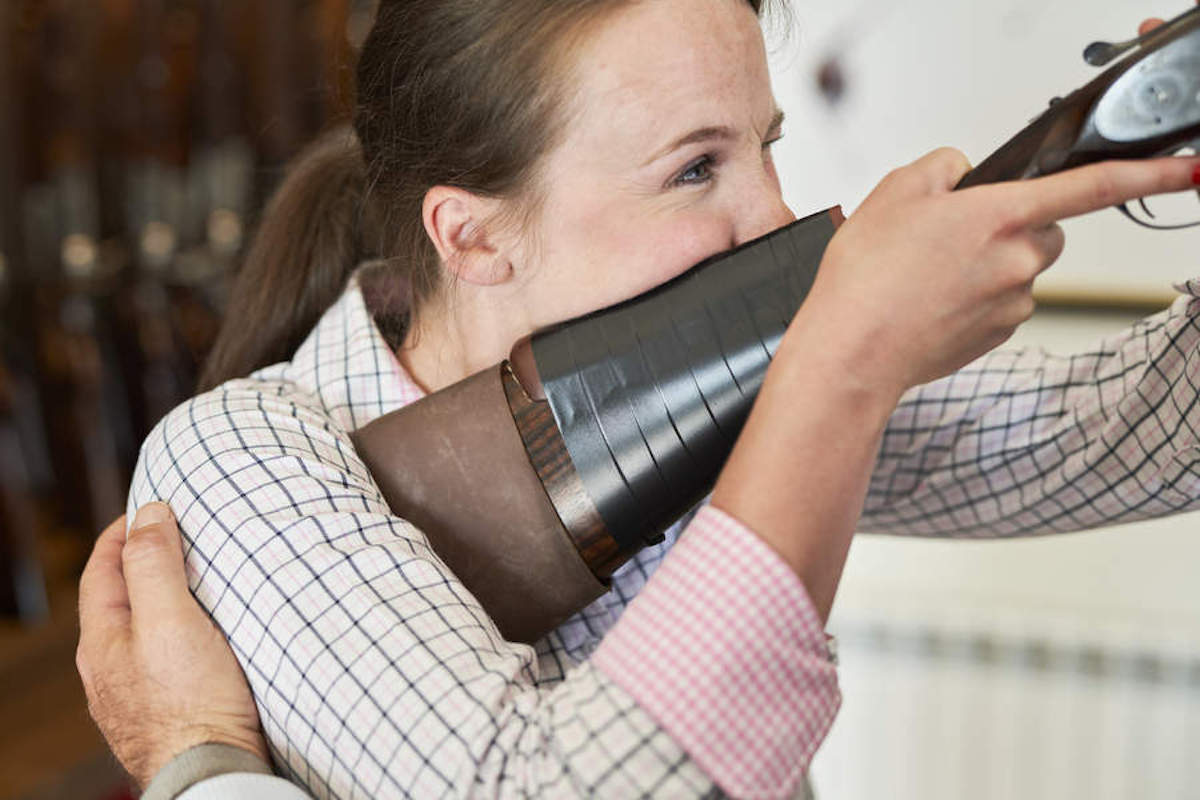Health advice for clay shooters – how to look after your hands
If you want to stay handy with a gun it’s important to look after your hands, says James Simon as he offers health advice for clay shooters

It’s worth paying attention to your hands to help ensure longevity in the sport
Daddles, digits, brass bands, bunch of fives, lills, meathooks? Whatever you like to call them, most of us probably tend to take our hands and fingers for granted. That is until they start playing up. It’s hardly surprising – we’re Shots after all, not concert pianists or ninja needlepointists. Yet, shooting is hard enough without hand, wrist or finger pain, so it’s prudent to take a few precautions and know what to do if issues do arise.
It’s laughable how a paper cut can cause the mind and barrels to wander, yet impossible to find humour in the kind of arthritic flare-up that makes it difficult to pick a gun up, let alone fire it.
Joint pain of one sort of another is particularly prevalent in older shooters. When it strikes it’s tempting to reach for expensive, branded, over-the-counter pain relief but studies show that the cheap unbranded stuff works just as well. Which, it turns out, isn’t very well at all.
Paracetamol is awful at treating pain caused by inflammation. In fact, it only ever provides good relief for about 30% of the population. Adding 100mg of caffeine boosts that figure to 40%. Ibuprofen is much better at treating inflammatory pain, yet still only provides good pain relief for 60% of people. A common side-effect is dizziness, which won’t improve your hit rate any.
Provided you don’t exceed the daily limits, it’s safe to take both drugs at the same time, with your favourite coffee of course.
Heat and cold therapy is very effective for joint pain. Heat increases blood flow, which soothes the joints, while cold constricts blood vessels, reducing stiffness and inflammation. Alternate freely between the two. An obvious way to reduce joint pain is to swap a heavy gun for something less hefty and shoot lighter loads. If you can lessen the amount of shooting you do, while ensuring that every shot counts, that should help.
Skin complaints are another common issue, and they vary widely in symptoms, cause and treatment. However, recent studies show that diet and exercise can alleviate, if not rid us, of many of these problems. Keeping to a healthy weight, culturing a diverse gut biome and taking regular exercise really does give our skin and joints the upper hand.
Some people love wearing gloves, while others hate the clumsy lack of sensitivity and dexterity. That said, highly technical gloves are popular among competition target rifle athletes for their support, grip and vibration damping qualities. At the other extreme, a single glove is recommended for anyone putting a lot of shells through a side-by-side. Those barrels get toasty.
Osteoarthritis
Osteoarthritis causes stiffness and pain in the joints, particularly the hands and feet. It’s the most common type of arthritis, and so prevalent that the National Institute for Health and Care Excellence reports that a third of women and a quarter of men aged between 45 and 64 have sought treatment for the condition.
Knuckles will be painful, particularly in the morning, but may be relieved by light movement, especially gently clenching and unclenching the fist. Osteoarthritis also makes gripping objects – even lightly – such as pistol grips and fore-ends painful.
Essentially, osteoarthritis promotes the loss of local cartilage, the formation of new bony spurs at the joint margins and inflammation of the synovial membrane that lines the joint capsule. Painful stuff.
Prevention
The cause may be genetic, due to a prior injury not having healed sufficiently, or overuse, especially repetitive actions that put excessive load and stress on a joint. Gender plays a significant part, with women more likely to suffer osteoarthritis than men.
You can lessen the risk of developing the condition by avoiding excessively repetitive actions that stress our hands. On the other hand, building up strength can have a similarly positive outcome because any load will be effectively lessened.
Management
Regular, consistent exercise to build strength and retain flexibility is essential, but rest is also important during flare-ups. Some people find that diet helps enormously, especially if they reduce their intake of inflammatory foods such as sugar, red meat and gluten, while increasing their intake of leafy vegetables and oily fish.
Prolonged gripping of heavy objects will spell trouble, so ditch your heavy gun and punchy loads for something lighter.

A lighter-weight gun can help to manage osteoarthritis
Rheumatoid arthritis
Rheumatoid arthritis is a completely different condition to osteoarthritis, one that’s potentially more serious. It’s an autoimmune disease in which the immune system attacks the lining of the joints, causing pain, swelling and stiffness. Unfortunately, it can also damage organs such as the lungs, heart, eyes and more, so it’s important to get a proper diagnosis. There’s no cure, but drugs such as methotrexate can slow its advance.
Like osteoarthritis, the small joints of the hands are likely to be affected first. Inflammation is the initial cause of discomfort, but as the disease progresses the joints become damaged.
Prevention
Little is known about the cause of rheumatoid arthritis, and there’s no single test to detect it . Genetics can play a part and it’s believed to be triggered by environmental factors such as a virus, or particularly stressful life events such as bereavement or divorce.
Management
Professional management is critical for sufferers of rheumatoid arthritis, so that permanent damage to joints and organs can be slowed. Once professional help, and most likely a drug regime, is in place, then day-to-day discomfort can be lessened by exercising joints regularly and keeping to a healthy weight. Fatigue is a common and frustrating symptom, so rest is vital too.
Trigger finger (tenosynovitis)
Contrary to popular belief, trigger finger can affect any finger, not just your index or ‘trigger finger’. In fact, it can even trouble your thumb, in which case it’s called – you’ve guessed it – trigger thumb. Or, to give it its medical name, De Quervain’s tenosynovitis.
Trigger finger is a form of tendonitis that’s initially characterised by a catch or click when bending the offending finger or thumb, accompanied by tenderness. The tendons that give your fingers mobility are protected and lubricated by a sheath, which enables them to move freely. If the sheath or tendons thicken, or become inflamed, the finger or thumb begins to catch or click, impairing mobility. If it’s the thumb that’s tender, the inflamed sheath is in the wrist, which may also be painful.
Over time, the condition becomes more painful and the digit less mobile. In severe cases it remains bent into the palm or cannot be straightened.
Prevention
Causes include making repetitive gripping movements and there is also an association with diabetes and rheumatoid arthritis. You can lessen your chances of suffering it by avoiding shooting excessively and by making healthy lifestyle choices.
Women have a higher risk of developing trigger finger, as do those with Dupuytren’s contracture.
Management
Trigger finger may go away with rest, but if not the affected finger can be splinted at night to help reduce the inflammation and swelling that’s causing the finger to catch. Steroid injections are also used to reduce swelling. Surgery is a last resort but can be effective.
Dupuytren’s contracture

Dupuytren’s contracture causes fingers to bend towards the palm
A little like trigger finger, Dupuytren’s contracture causes fingers to bend in towards the palm. It usually affects the ring and middle fingers, and the onset is often gradual. The initial symptoms are raised bumps or lumps at the top of the palm, below the affected finger or fingers. Over many months or years, the bumps become more pronounced and the finger harder to straighten. In time, it may be difficult to place your hand flat on a surface or, in severe cases, the finger may be stuck in a bent position.
Prevention
Dupuytren’s contracture can be hereditary, in which case there’s little you can do beyond blaming your parents. However, it may also be linked to smoking and excessive drinking.
Management
Surgery is the only treatment.
Dermatitis
Dermatitis is a catch-all word for irritated skin, with the most common forms being seborrheic dermatitis, atopic dermatitis (eczema) and contact dermatitis. The latter two types can affect the hands.
Eczema usually develops in childhood as dry, cracked, itchy patches of reddened skin. It tends to be cyclical, with flare-ups followed by months of respite before the next strike.
Contact dermatitis also presents as a reddened rash which, as the name suggests, is caused by direct contact with a substance or an allergic reaction to it.
Both kinds of dermatitis are disheartening enough, but sufferers also risk skin infection if the affected area isn’t well cared for.
Prevention
The causes of eczema are widespread and can be difficult to pinpoint but include genetic disposition and the prevalence of the bacteria Staphylococcus aureus on the skin. There is also an association with hay fever and asthma.
Irritant contact dermatitis is commonly caused by contact with solvents, bleach, detergents, soap and chemicals such as fertilisers and pesticides. However, it can
also be caused by seemingly benign or difficult to trace products such as plants and airborne substances.
Allergic contact dermatitis flares when a substance triggers an immune reaction in your skin. Common allergens include antibiotic creams, body washes, hair dyes, nickel, sunscreens and cosmetics.
In theory, contact dermatitis can be avoided by wearing protective gloves. However, latex (rubber) gloves are a common trigger, as is the powder found in some pairs. Additionally, sweat induced by wearing gloves can exacerbate the condition. Vinyl, powder-free gloves, worn in moderation, are a safer bet.
Management
Dermatitis can be a difficult condition to manage effectively. Most sufferers find relief from avoiding extremes of temperature and using gentle cleansers followed by protective moisturisers. It’s important not to let the skin on your hands become infected.
Carpal tunnel syndrome

A splint is often recommended for CTS sufferers
Carpal tunnel syndrome (CTS) is a common complaint that causes tingling, numbness and weakness in the hand, particularly the thumb, index and middle fingers. Some people also suffer sudden, excruciating nerve pain in the wrist when picking up items. At best it’s uncomfortable and makes gripping objects, such as your gun, very difficult.
It’s caused by pressure on the median nerve, which runs through a passageway – the carpal tunnel – that’s surrounded by bones and ligaments on the palm side of the wrist. If the tunnel becomes inflamed due to overuse, injury or a condition such as arthritis, the nerve is pinched, causing pain, numbness and weakness.
Prevention
Any job or hobby that requires repetitive hand and wrist movements, including excessive shooting, can cause or exacerbate CTS. Once again there is also an association with diabetes and obesity, so healthy lifestyle choices may make you less prone to the condition. Taking breaks, relaxing your grip and keeping your hands warm on cold days can all help too.
Management
CTS often responds well to rest but it may take months to resolve. A splint is often recommended to keep the wrist straight, which relieves pressure on the median nerve, but if that fails a steroid injection may help. Surgery is a last resort but effective.
Raynaud’s syndrome
Having cold hands and feet during the winter months is familiar to us all, but people with Raynaud’s syndrome will feel the effects more severely, with numbness setting in almost as soon as they venture outside. This is because the smaller arteries that supply blood to their skin narrow more than normal, causing discomfort. It affects women more than men.
Prevention and management
The obvious answer is to wear thick, insulated gloves, but these can hamper dexterity when shooting. Instead, experiment with thick layers over your core and thinner gloves. Keeping your core warm will stop your heart from withdrawing warm blood from your extremities, and the thin gloves may be enough to ward off any windchill.








